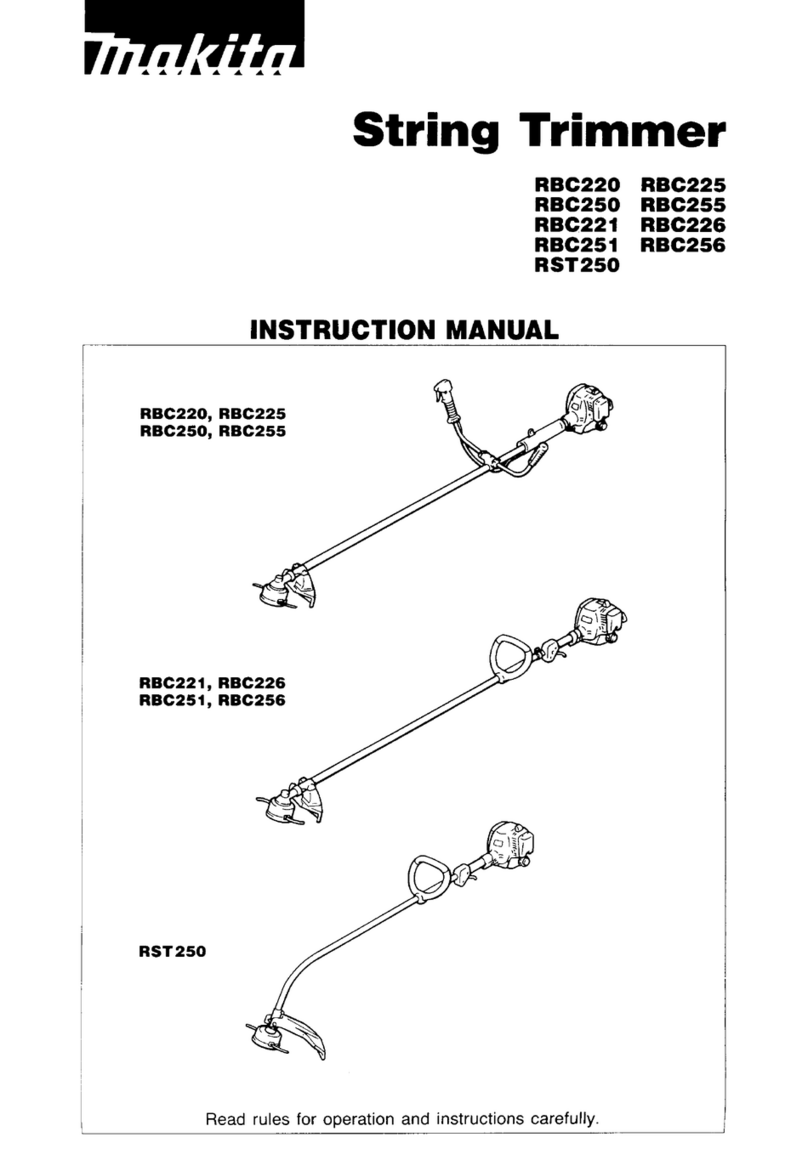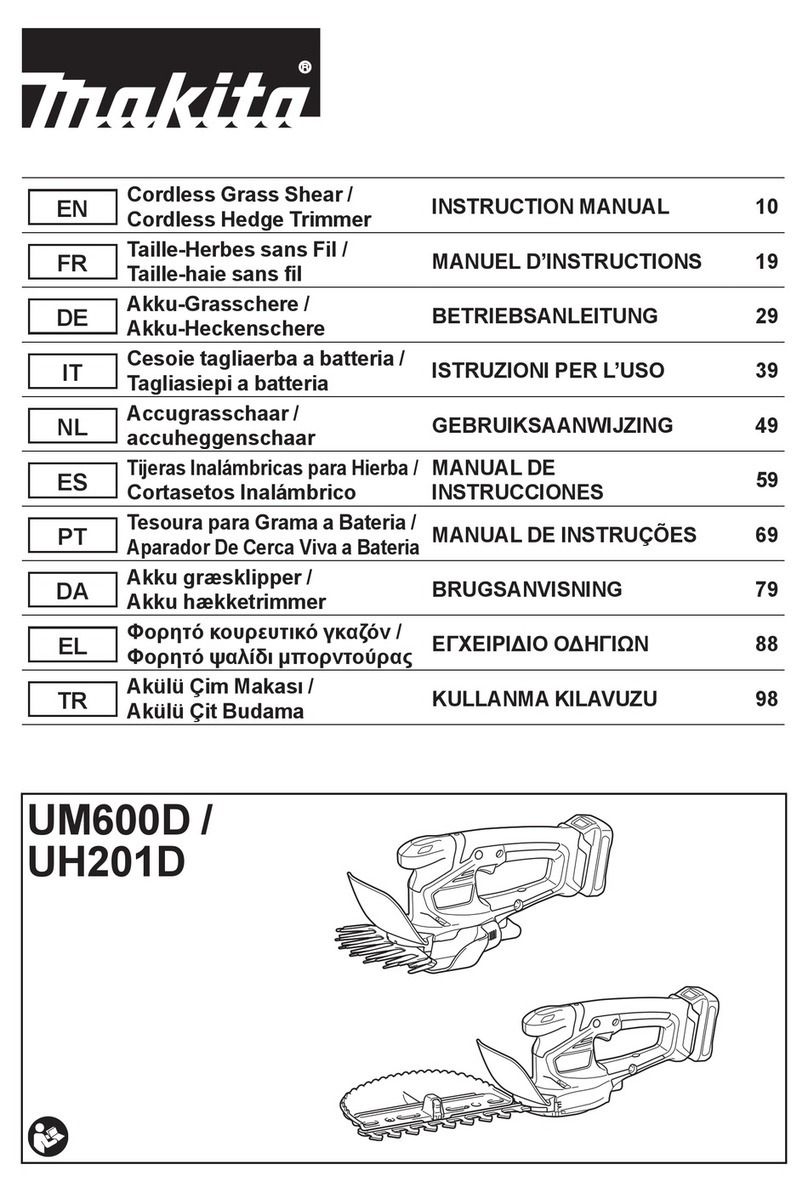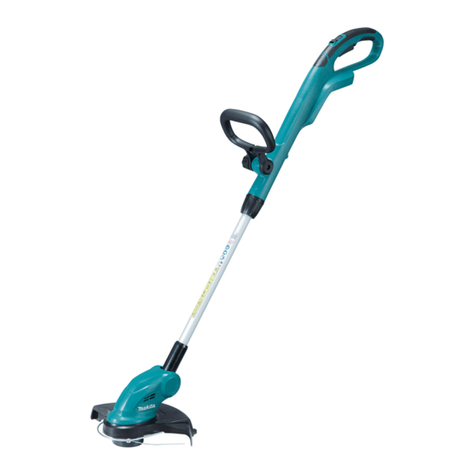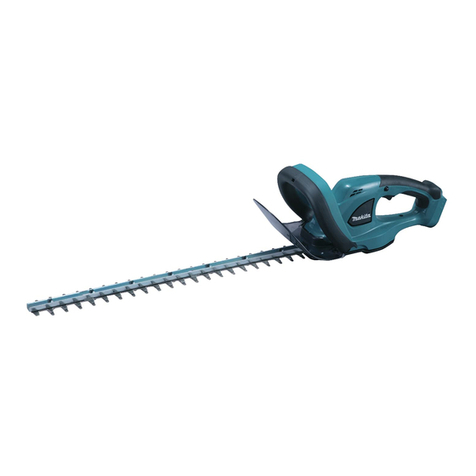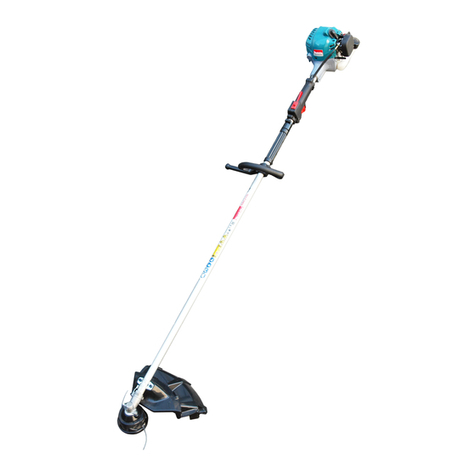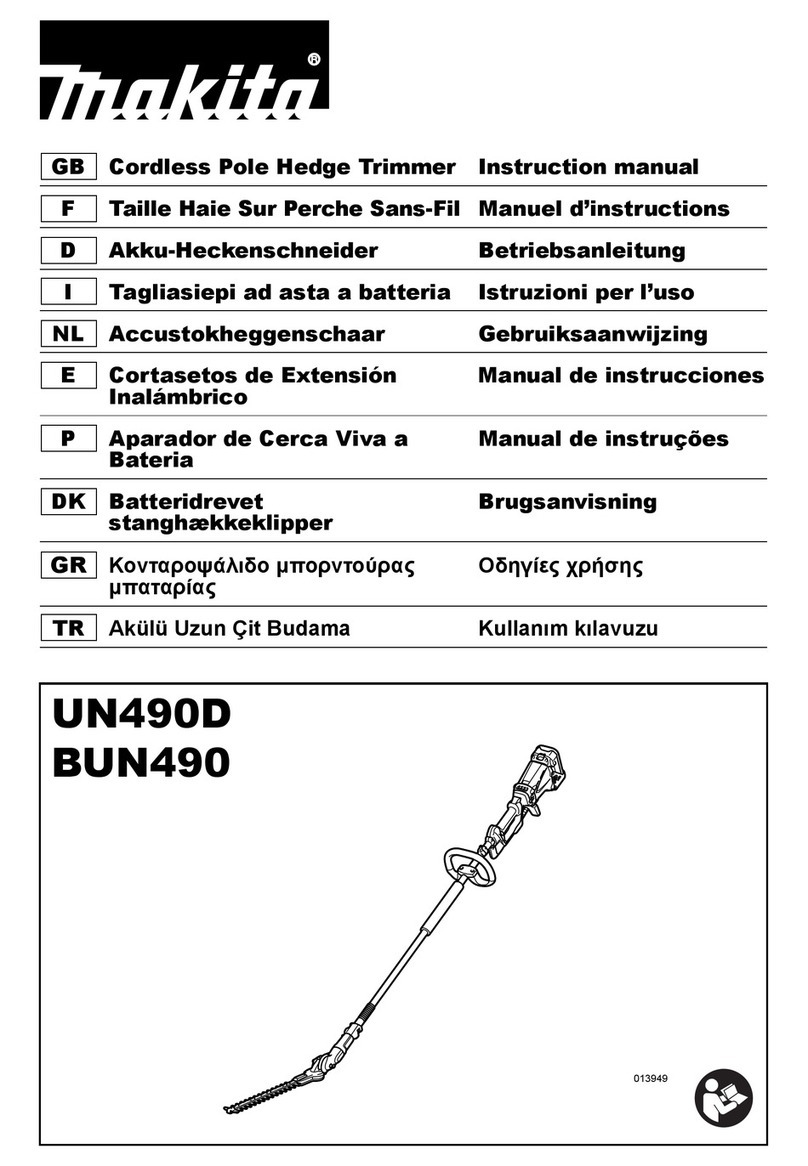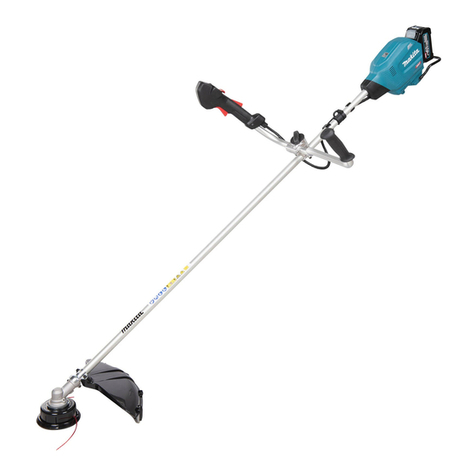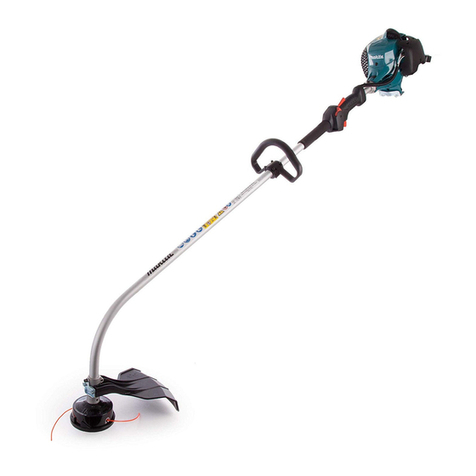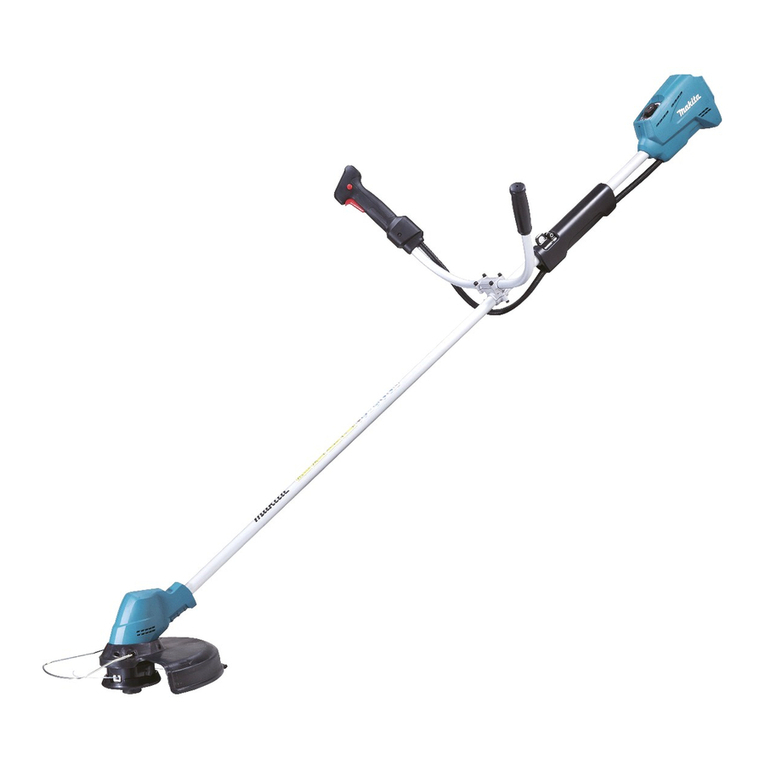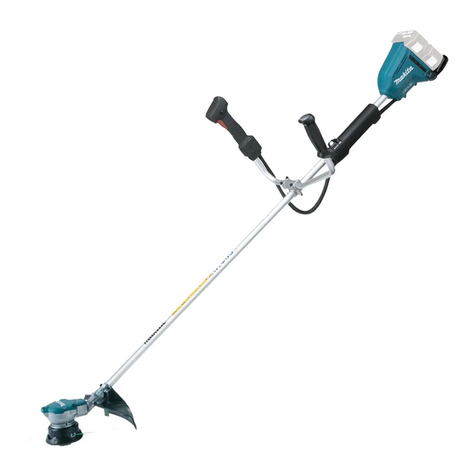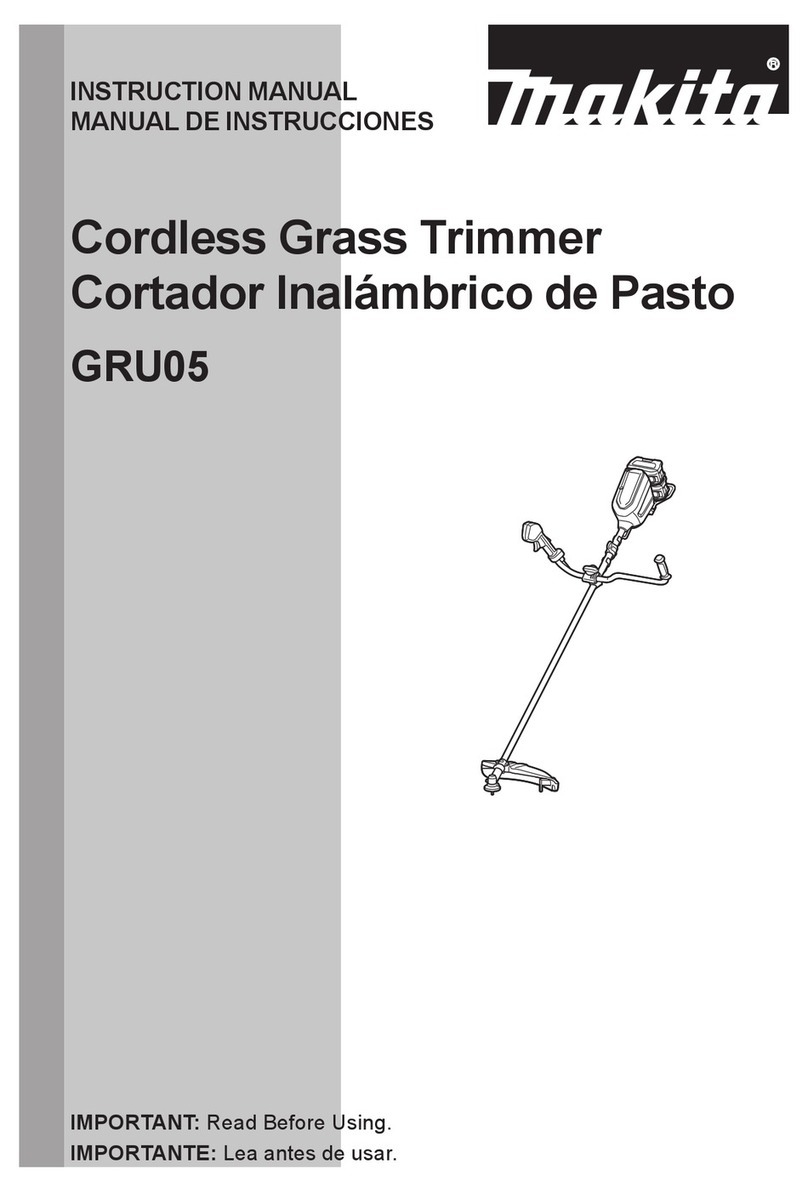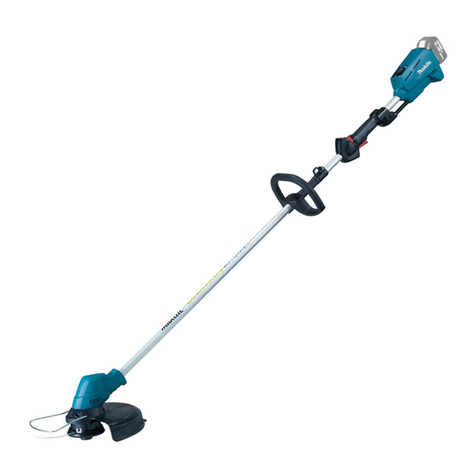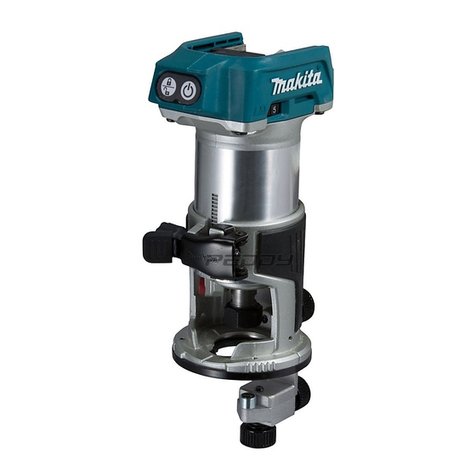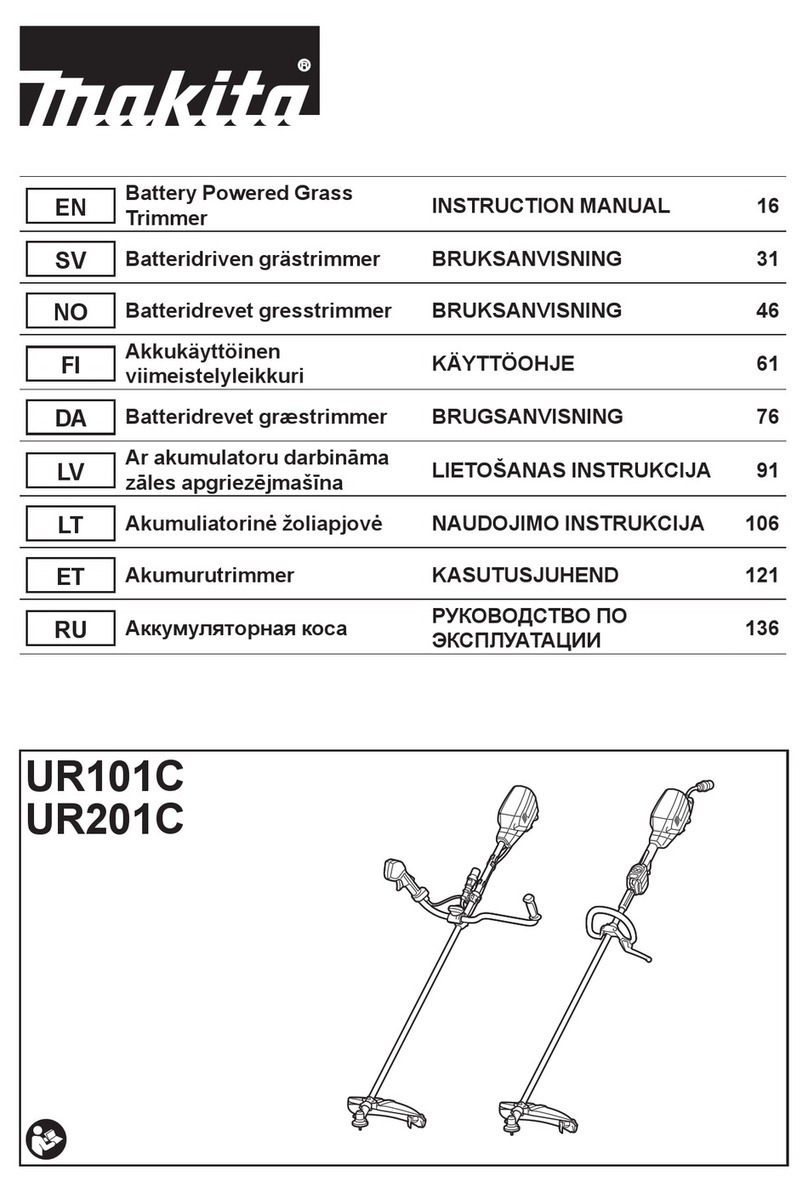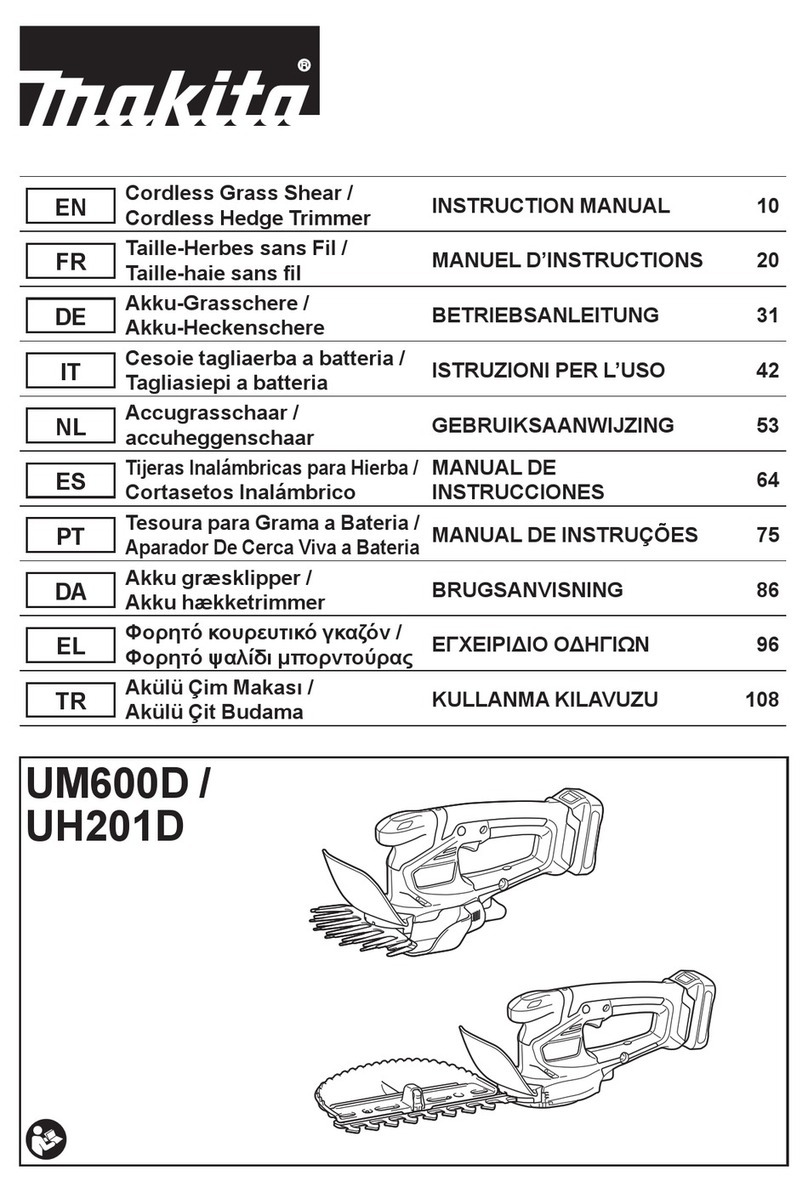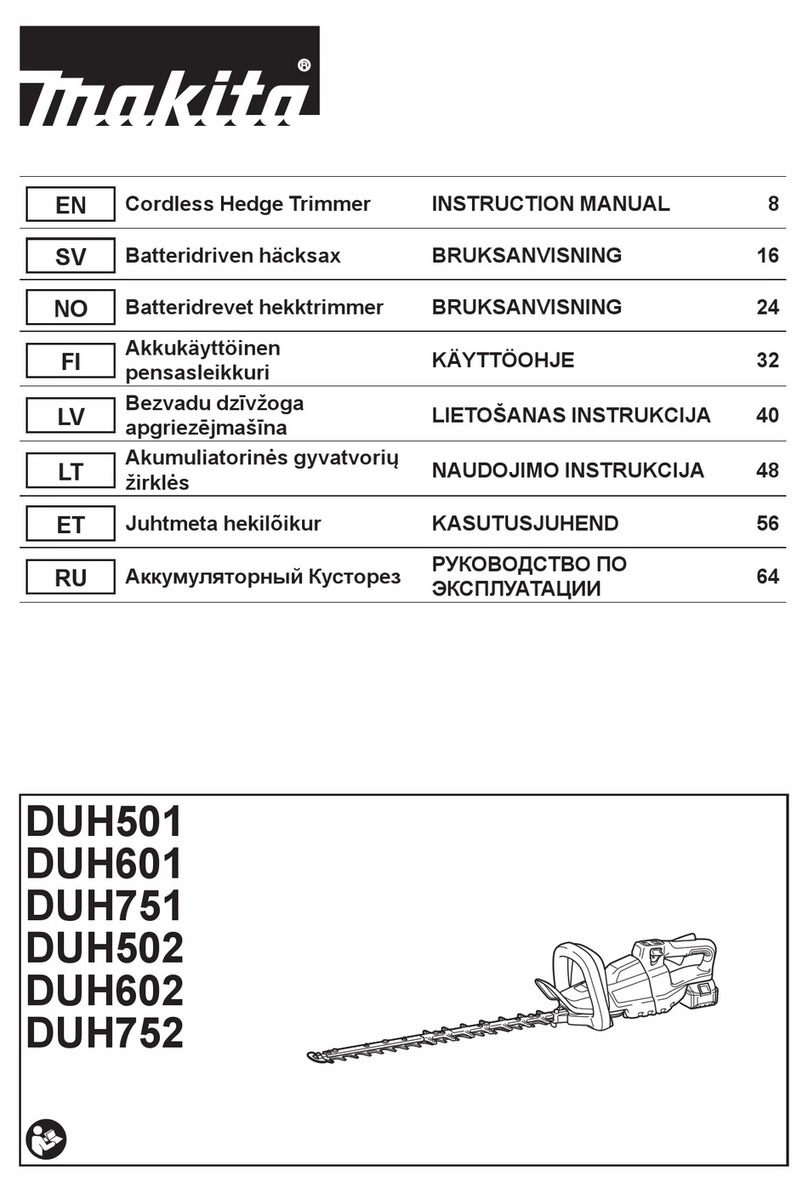
8
instructions may result in electric shock, fire and/or
serious injury.
Save all warnings and
instructions for future reference.
General instructions
1. To ensure correct operation, user has to read this
instruction manual to make himself familiar with the
handling of the equipment. Users insufficiently
informed will risk danger to themselves as well as
others due to improper handling.
2. It is recommended only to lend the equipment to
people who have proven to be experienced with
brushcutters/string trimmers. Always hand over this
instruction manual.
3. First users should ask the dealer for basic instructions
to familiarize oneself with the handling of brushcutters/
string trimmers.
4. Never allow people unfamiliar with these instructions,
people (including children) with reduced physical,
sensory or mental capabilities, or lack of experience
and knowledge to use the equipment. Local
regulations can restrict the age of the operator.
5. Use the equipment with the utmost care and attention.
6. Operate the equipment only if you are in good physical
condition. Perform all work calmly and carefully. Use
common sense and keep in mind that the operator or
user is responsible for accidents or hazards occurring
to other people or their property.
7. Never use the equipment after consumption of alcohol
or drugs, or if feeling tired or ill.
8. The motor is to be switched off immediately in case
that the equipment shows any problem or abnormal
sign.
9. Switch off and remove the battery cartridge when
resting and when leaving the equipment unattended,
and place it in a safe location to prevent danger to
others or damage to the equipment.
10. Don’t force the equipment. it will do the job better and
with less likelihood of a risk of injury at the rate for
which it was designed.
11. Don’t overreach. Keep proper footing and balance at
all times.
Intended use of the equipment
1. Use right equipment. The cordless brushcutter/string
trimmer is only intended for cutting grass, weeds,
bushes and undergrowth. It should not be used for any
other purpose such as edging or hedge cutting as this
may cause injury.
Personal protective equipment
1. Dress Properly. The clothing worn should be
functional and appropriate, i.e. it should be tight-fitting
but not cause hindrance. Do not wear either jewelry or
clothing which could become entangled with bushes
or shrubs. Wear protective hair covering to contain
long hair.
2. In order to avoid either head, eye, hand or foot injuries
as well as to protect your hearing the following
protective equipment and protective clothing must be
used during operation of the equipment. (Fig. 1)
3. Always wear a helmet where there is a risk of falling
objects. The protective helmet is to be checked at
regular intervals for damage and is to be replaced at
the latest after 5 years. Use only approved protective
helmets.
4. The visor of the helmet (or alternatively goggles)
protects the face from flying debris and stones. During
operation of the equipment always wear goggles, or a
visor to prevent eye injuries.
5. Wear adequate noise protection equipment to avoid
hearing impairment (ear muffs, ear plugs etc.). (Fig. 2)
6. The work overalls protect against flying stones and
debris. It is strongly recommended that the user wears
work overalls.
7. Special gloves made of thick leather are part of the
prescribed equipment and must always be worn
during operation of the equipment.
8. When using the equipment, always wear sturdy shoes
with a nonslip sole. This protects against injuries and
ensures a good footing.
Electrical and battery safety
1. Avoid dangerous environment. Don’t use the
equipment in damp or wet locations or expose it to
rain. Water entering an equipment will increase the
risk of electric shock.
2. Recharge only with the charger specified by the
manufacturer. A charger that is suitable for one type of
battery pack may create a risk of fire when used with
another battery pack.
3. Use power tools only with specifically designated
battery packs. Use of any other battery packs may
create a risk of injury and fire.
4. When battery pack is not in use, keep it away from
other metal objects, like paper clips, coins, keys, nails,
screws or other small metal objects, that can make a
connection from one terminal to another. Shorting the
battery terminals together may cause burns or a fire.
5. Under abusive conditions, liquid may be ejected from
the battery; avoid contact. If contact accidentally
occurs, flush with water. If liquid contacts eyes,
additionally seek medical help. Liquid ejected from the
battery may cause irritation or burns.
6. Do not dispose of the battery(ies) in a fire. The cell
may explode. Check with local codes for possible
special disposal instructions.
7. Do not open or mutilate the battery(ies). Released
electrolyte is corrosive and may cause damage to the
eyes or skin. It may be toxic if swallowed.
Starting up the equipment (Fig. 3)
1. Make sure that there are no children or other people
within a working range of 15 meters (50 ft), also pay
attention to any animals in the working vicinity.
Otherwise stop using the equipment.
2. Before use always check that the equipment is safe
for operation. Check the security of the cutting tool
and the guard and the switch trigger/lever for easy and
proper action. Check for clean and dry handles and
test the function of the start/stop.
3. Check damaged parts before further use of the
equipment. A guard or other part that is damaged
should be carefully checked to determine that it will
operate properly and perform its intended function.
